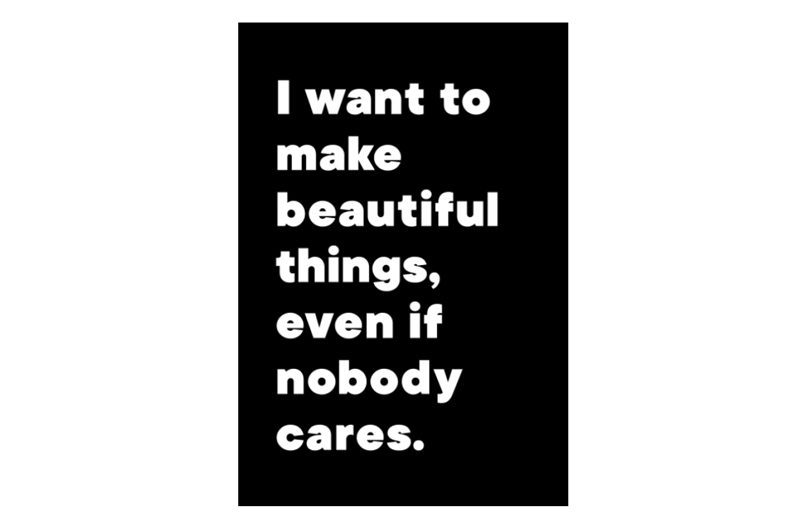The Lowdown: How Ethan Hawke left a personal touch on the Tulsa sets
In the mystery drama series The Lowdown, Lee Raybon (Ethan Hawke), a self-proclaimed “truthstorian” and bookstore owner in Tulsa, Oklahoma, investigates the city’s underbelly. After publishing an exposé on a powerful family, Raybon — loosely based on real-life historian Lee Roy Chapman — becomes entangled in a dangerous web of corruption and secrets.
To immerse audiences in Tulsa’s layered world, Emmy-winning production designer Brandon Tonner-Connolly chose to renovate real-life spaces for the main sets rather than build them on a soundstage, prioritising locally sourced materials and authentic detail.
We caught up with Tonner-Connolly to discuss The Lowdown production design — why working with local communities was so crucial to him, the importance of supporting local artisans, and the personal touches Ethan Hawke left on the sets.

Film and Furniture: One of the three core sets in the story is Lee Raybon’s apartment. Can you walk us through a decision not to build it on a sound stage but to use an existing building and the renovation process? Did we hear correctly that Lee Roy Chapman lived there before?
Brandon Tonner-Connolly: When I first started talking about the show with series creator Sterlin Harjo at the end of Reservation Dogs, he mentioned movies like The Long Goodbye, Night Moves, and Chinatown. 1970s New Hollywood Neo Noirs, “shaggy dog mysteries,” where the detective wanders through a vivid world, and part of the enjoyment is wandering with them. Only this time, instead of LA or NY, we’d be creating this dreamy noir journey based on the complex history and landscape of Tulsa.
The very specific geography he wrote into the script and the way we’d been working on Reservation Dogs, always drawing so much energy and inspiration from being in the actual community, had me thinking we should shoot the major sets (the bookstore, Sweet Emily’s, etc) out in the world.
Realistically, we knew if we were to build the interiors on a stage, the budget and the logistics would probably inhibit our ability to do things like trans light backgrounds or realistically constructed exteriors, and would limit how they could shoot the show. We wanted to be able to see the street outside, to have characters pop in and out, to create an uninterrupted world for Sterlin and Ethan to play in. If the point is to amble along with Lee, we wanted him to amble with the Tulsa skyline in the background.

After a lot of scouting, I found a block of derelict, raw spaces with an amazing view of downtown Tulsa. The buildings didn’t have power or water or much internal structure at all, but we knew it would be worth it to build our own little backlot in the heart of the city. At that point, we were still thinking we could build Lee’s Apartment separately, but when we happened to look upstairs from our Sweet Emily’s space, there were the hollowed-out remnants of a former apartment we could build our set in. When I showed Sterlin the spaces, he loved them and also remembered that Lee Roy Chapman, his friend and the loose inspiration for Lee Raybon, had actually lived there years before. It just felt right to be there on so many levels.
We wanted to convey that, while he does his best to create a comfortable, safe space for his 12-year-old daughter when she stays with him, he’s still a bit of a mess overall. We brought in our own wall textures (unfinished paint, including some subtle colours from the bookstore as if he just decided to reuse the paint from downstairs), flooring, and other surfaces (ripping out kitchen cabinets), and our amazing Set Decorator Tafv Sampson filled it with the type of lived-in details that tell the story of Lee’s life. Lee Roy Chapman’s family gave us some of his things to dress in, like a Christmas stocking his son had made for him with “Lee” written in glitter pen and one of his plants that his sister had been holding onto since he passed away in 2015.
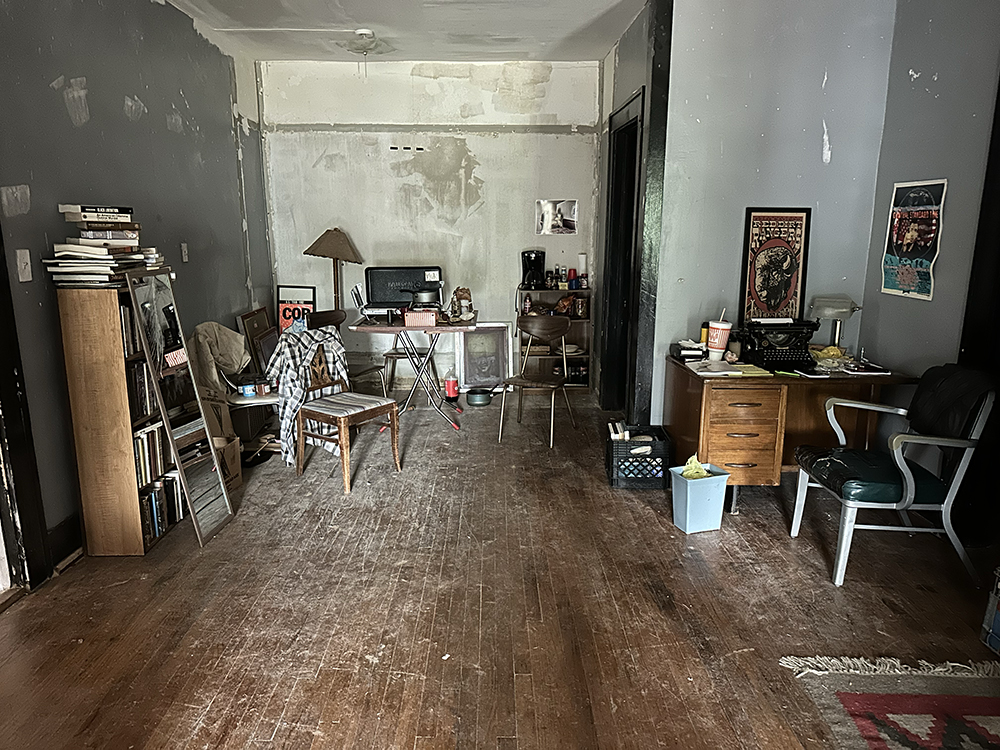
During the shoot, Chapman’s former wife came to the set and cried seeing Lee’s world put back together in the same space years later.
We had a year in between shooting the pilot and coming back for the series. During that time, the landlord decided to do a crash renovation and try to rent the places asap. When we got there to shoot the series, the apartment had been fixed up, and we had to tell them they’d gone too far and demolish it again ourselves to bring it back to the appropriate level for Lee.
F&F: Sweet Emily’s features a custom-made wallpaper. Can you walk us through the process of designing it and also working with local artisans to print it?
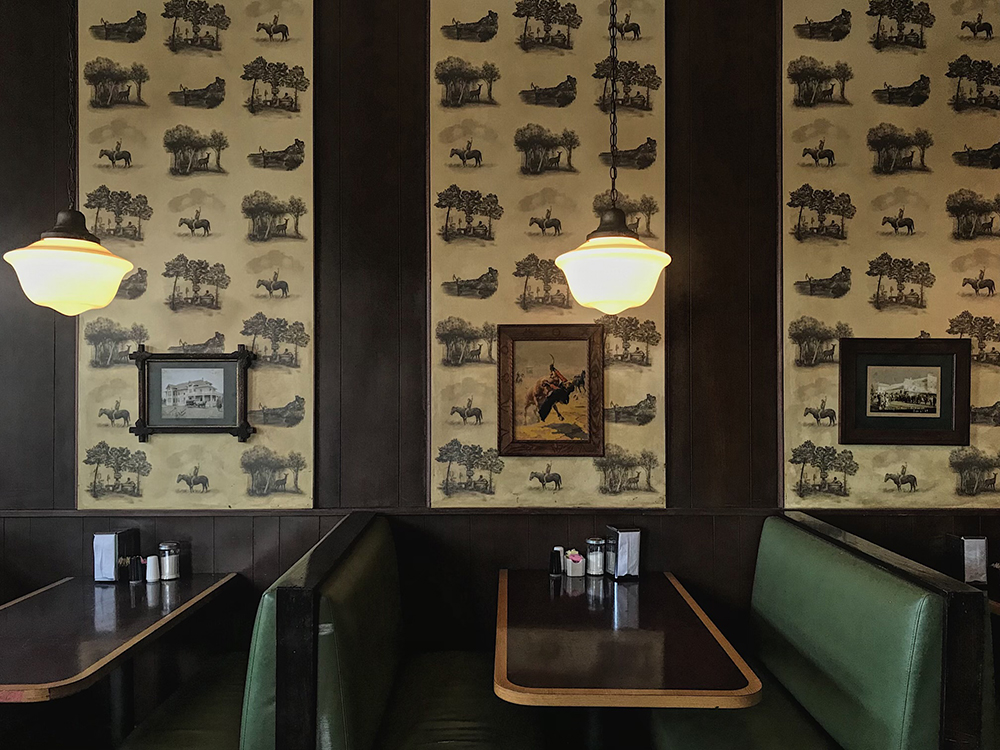
BT-C: Sweet Emily’s was another total reclamation project. The space was hollowed out to begin with, except for an existing bar, which was the wrong shape, texture etc. So we ripped it out and built in our own formica countertop, installed our flooring (checkered tile near the counter, low-pile carpet for the adjacent dining room to show decades of food stains), and added a new ceiling to visually compress the rooms a bit.

For the walls, we wanted to combine a few ideas. Wood panelling to date the space and create the feeling of a warm cocoon, Lee and other late-night patrons could get lost in. Wallpaper with a pattern to create a sense of repetition, of being static and suspended in time. Both textures absorbing years of cigarette smoke, grease splatter, and deferred dreams. I approached the wallpaper wanting to create pastoral scenes that either could fade into the background unnoticed or amuse you for a few minutes if you found yourself sitting in a booth alone, drinking coffee and smoking a cigarette at 2am. Small landscapes that could be unravelled slowly, occupying a weary mind. Sterlin and I were talking it over one day, and half-joked we could hide a Reservation Dogs character among the trees. We looked at each other like “Wait, does that have to be a joke?” and I ran with it. But it had to be very subtle, a hidden gem that would make you question your own eyes unless you paused it and zoomed in.
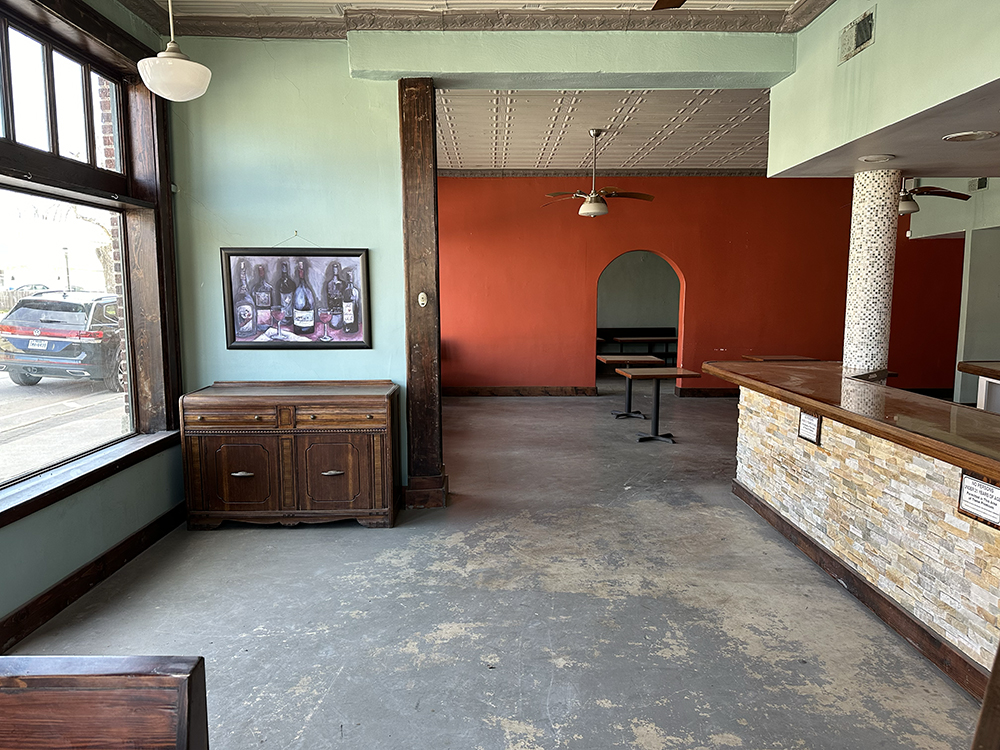
I picked out four moments from the three seasons of Reservation Dogs and brought on an illustrator I love named Mary Hayes, who had done some work on Rez Dogs. She proceeded to lovingly hand-draw the beats I’d chosen, doing some amazingly nuanced work in a tight time frame (it was a pilot after all, and we had about 4 weeks to prep the entire thing. Then she patterned it out, and our graphic designer, Sarah Jensen, applied the finishing touches. We always have an ethos of maintaining the same quality standards while using local vendors. In this case, we found a Tulsa printer named Bluestem who was excited to take on the challenge of printing the wallpaper with the proper texture and made it happen on our crazy timetable.
The Lowdown crew is about 90% Reservation Dogs family, so when people walked in on our first day of shooting and noticed William Knifeman and other scenes from the last three years of our lives, they laughed, cried, and begged us for extra rolls so they could do a room in their house.
F&F: We can’t talk about the project and not mention the bookstore. Apparently, you and your team carefully selected over 5000 books. Can you talk a little bit about the process? I believe one of them was also the first edition of One Flew Over the Cuckoo’s Nest. Can you share how it ended up there?
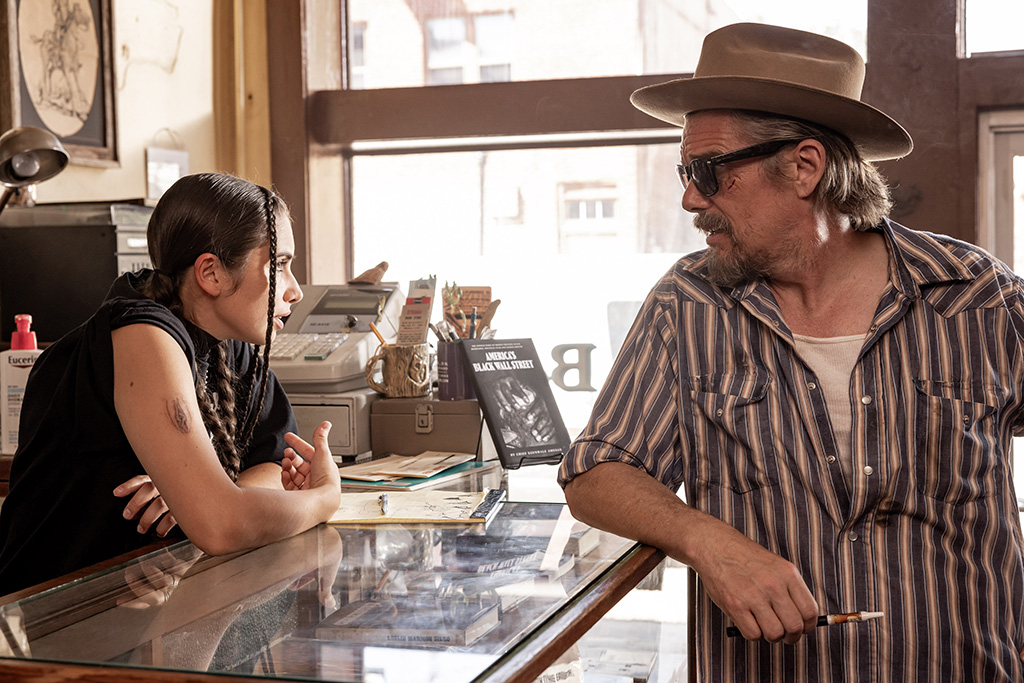
BT-C: It was so much fun making Hoot Owl because I love bookstores. I have a circuit of them around the country, I like to drop into whenever I happen to be near Pittsburgh or Oxford MS or Point Reyes. I love to see how the owners and staff divide the space up, and what little inside jokes they have posted, and the whole world they’ve created for other book lovers. We were able to incorporate all those references into Hoot Owl, making sure the space told the story of Lee’s appreciation for classic haunts, like how his window signs are a subtle reference to City Lights Bookstore in SF.
In the script, Hoot Owl is described as barely a functioning store, mostly Lee’s mad kingdom. It’s the one space he has complete control over in his life. I made concept art that showed a world truthful to how Lee Raybon would lay it out (maybe a little less chaotic if I’m being honest), and we built our flooring, ceiling, counter, and wild walls (for ease of shooting) into the raw 6th Street space. Once our amazing construction and scenic team, led by Art Director Andy Eklund, was finished, Tafv went to work decorating.
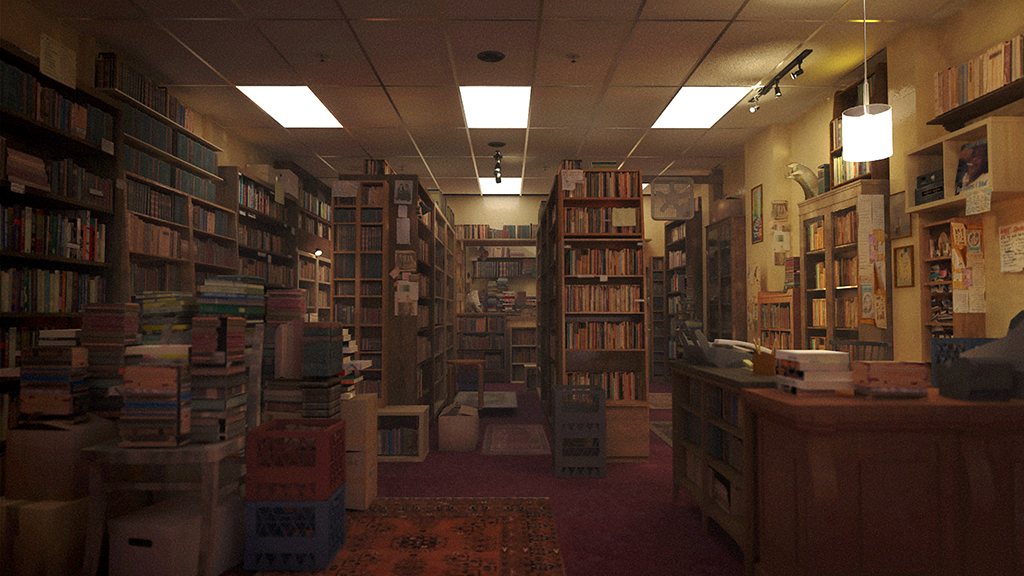
We always have this philosophy, which we honed on Reservation Dogs, that we care just as much about the experience of the people who are going to be in the space (the director, the actors, the emotionally invested crew, the community members who are going to drop by) as we do about what ends up on camera. Lee Roy Chapman was a well-known character in Tulsa, and this show brought together all the people who knew and loved him (as well as the people he still owed 20 bucks to). As on Reservation Dogs, we felt like we were being trusted by a community to tell their story and so if we could include one small detail that would matter to one person who was going to step onto that set, we had to make it happen. It helps us remember to keep everything as specific to our show as possible and to create a strong sense of place, a seamless world for the director and actors, and crew to get lost in and make art.
Following that idea, we knew that each individual book mattered, and we wanted Ethan or anyone else to be able to pull a book at random from any shelf and feel it connected to the character. The real Lee Roy worked at a bookstore called Oak Tree Books, and we got in touch with the former owner, Sean, who was able to speak to what Lee Roy would have had on the shelves. We then turned to an amazing used bookstore in Tulsa called Gardiner’s, which Sean worked at, where with his help, we were able to pull and separate out the 5000 books we needed to fully stock the store.
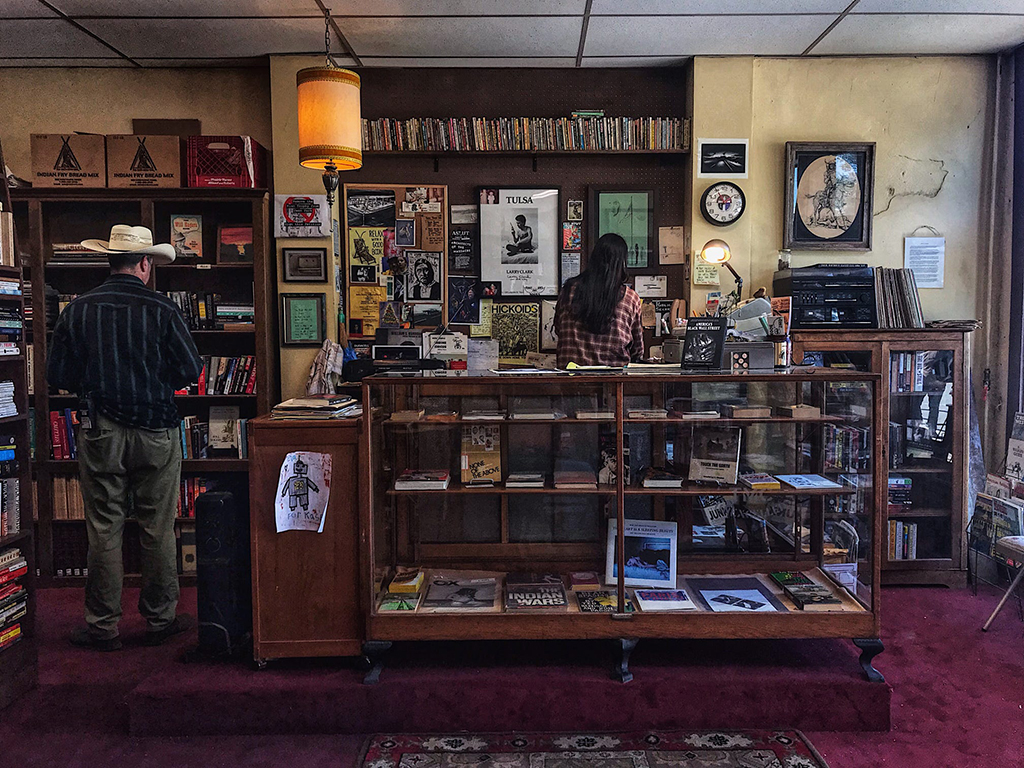
We established the front case as a space for books that were rare, valuable, or just emotionally significant to Ethan’s character, books we wanted to feature. These included an early edition of One Flew Over The Cuckoo’s Nest, both a classic in and of itself and significant because Tafv’s grandfather, Will Sampson, plays Chief in the film adaptation. Incidentally, Will Sampson was also an artist, and Tafv found a drawing of his on a placemat on Facebook Marketplace in Tulsa, so we got it, framed it, and dressed it into the bookstore in a place of prominence where it’s actually featured in all the trailers. House Made of Dawn by N. Scott Momaday is a classic of Indigenous literature and a reference to the 1970s throwback episode in the last season of Reservation Dogs. America’s Black Wall Street by Tulsa resident Chief Egunwale Amadan frames the Tulsa Race Massacre in the larger context of land theft from marginalized groups.
We had so many great books, Ethan would pick a random one off the shelf and ask if he could keep it to read after shooting. We tried to take it as a compliment the many times we caught Sterlin walking off with a book (without necessarily asking).

F&F: We hear Ethan Hawke left some personal touches in the bookstore. Can you walk us through what they were? Did he ask for things to be also included in other sets, like his apartment, or did you have any discussions with him about the items in some of those spaces?
BT-C: It actually came up after the first episode or two, Ethan asked if he could add one or two playbills from productions of a Sam Shepard play he’d directed in a way that didn’t mess with continuity. Tafv and I, of course, were thrilled. The space behind the counter at Hoot Owl had become a kind of wall of honor of Tulsa artists and real-life characters, including Lee Roy Chapman’s screenprint art we’d recreated, work by Larry Clark, and photos from people in the community. The playbills were exactly the type of lived-in, emotionally significant details we loved, and it was exciting Ethan was so into the character and the space that he wanted to bring some meaningful pieces from his own life and artistic experience into it.
I think that was the only set he added elements to but we always knew it was a possibility he would pick something up during a scene or work things into his performance, like the beauty shop chair at the Tulsa Beat, which we love because we’re constantly leaving breadcrumbs of the deeper stories of the spaces and the characters in the sets for people to discover and get inspired by.

F&F: The wallpaper and books are not the only instances in which you sourced things locally for this production. Can you share more about opting to support local businesses and artists over shipping things? For example, in terms of furniture sourcing and finding unique finds.
BT-C: Our commitment to working with local businesses and sourcing within the community started out by necessity. Tulsa just doesn’t have any prop houses like other cities, and many of the things we were looking for on Reservation Dogs didn’t exist in NY or LA. Instead, we turned to Oklahoma artisans and stores, who helped us create the unique, specific world of that show. For The Lowdown, we needed to create an equally strong sense of place to ground the story and so we turned to the connections we’d made in Tulsa over the past three years. And, of course, Tafv’s best friend and worst enemy, Facebook Marketplace. This approach not only helped us with our goals for the show but also put resources back into the community, which is equally important.
One great ally we have is Mary Beth Babcock, who owns Buck’s Vintage on 66, an amazing collection of classic finds and new mercantile goods we’re constantly raiding. Mary Beth was also a friend of Lee Roy Chapman’s and loaned us some amazing art, including the giant Hank Williams piece in Elijah’s office at the Heartland Press. MB is actually a background actor in a few scenes as well.
Michael at Love Me Two Times Vintage has always been kind and has come through with the perfect piece on countless occasions.
Sometimes we search far and wide and end up coming up with exactly the right decor from exactly the type of place we want to help support. The booths from Sweet Emily’s are a great example. We had been looking for weeks and were on the verge of having to fabricate them ourselves when, at the last minute, a burger joint that prioritizes hiring the recently incarcerated heard we were looking and offered us the vintage booths they just tore out of the dining room they updated. They were so excited to help, they didn’t want any compensation, but of course, we arranged for a donation whether they liked it or not.
We feel the same way about working with local artists. When we’re telling the story of a community, we want the people from the community to lead the way and make sure the work is as authentic as possible. For the Tulsa Beat office, we wanted a mural that told the history of the Greenwood neighborhood and the Tulsa Race Massacre, but with the unique style of the Tulsa Beat founder, Cyrus, played by Killer Mike. A friend introduced me to Alexander Tamahn, a Tulsa artist who had painted public murals on the topic, and we collaborated on a design that he then painted on the wall, which was the perfect finishing touch to the space.
The Lowdown production design roots its noir storytelling in authenticity — shaped by place, history and the hands of the local community.
You can watch The Lowdown now on Hulu and FX in the US, and internationally on Disney+.
You can also purchase episodes on platforms like Apple TV, Amazon Video, and Fandango at Home.
Sponsored post
This feature is FREE to Classic members.
Join our newsletter community to receive Film and Furniture inspiration direct to your inbox and we’ll UPGRADE you to Classic Membership (which includes access to our exciting giveaway draws) for FREE.
To access in-depth features, video interviews, invitations to pre-release film screenings, major exhibitions and more, become a Front Row or Backstage member today!






